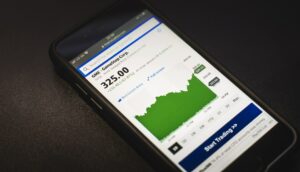Understanding the Meaning of Leverage in Forex Trading
Forex trading is a popular investment option for individuals looking to make profits by trading different currencies. One of the key aspects of forex trading is leverage. Leverage allows traders to control larger positions in the market with a smaller amount of capital. In this article, we will delve into the meaning of leverage in forex trading and understand how it works.
Leverage can be defined as the use of borrowed funds to increase the potential return on investment. In forex trading, leverage is provided by the broker, allowing traders to trade larger positions than what their account balance would allow. It is represented as a ratio, such as 1:50, 1:100, or even higher.
Let’s take an example to understand how leverage works. Suppose a trader has $1,000 in their trading account and the broker provides a leverage ratio of 1:100. This means the trader can control a position of $100,000 in the market. Without leverage, the trader would only be able to trade with $1,000. Leverage amplifies the potential gains or losses in the market.
The use of leverage can be beneficial for traders as it allows them to make larger profits with a smaller initial investment. However, it is important to understand that leverage also increases the risk associated with forex trading. While leverage can multiply gains, it can also amplify losses if the trade moves against the trader.
It is crucial for traders to have a clear understanding of leverage and its implications before using it in their trading strategy. Here are a few key points to keep in mind:
1. Risk Management: As leverage increases the risk, it is essential to have a solid risk management plan in place. Traders should determine their risk tolerance and set appropriate stop-loss orders to limit potential losses.
2. Margin Call: When using leverage, traders need to maintain a certain margin level in their trading account. If the account balance falls below the required margin level, the broker may issue a margin call, requiring the trader to deposit additional funds or close some positions.
3. Volatility: Leverage should be used cautiously in highly volatile markets. While volatility can provide opportunities for significant gains, it also increases the risk of substantial losses. Traders should be aware of the market conditions and adjust their leverage accordingly.
4. Education: Traders should educate themselves about leverage and its implications. There are various online resources, courses, and webinars available that can help traders understand how to use leverage effectively and minimize the associated risks.
It is also important to note that different brokers may offer different leverage ratios. Some brokers may offer higher leverage options, while others may have lower leverage ratios. Traders should carefully consider the leverage options provided by their chosen broker and select the one that aligns with their risk appetite and trading strategy.
In conclusion, leverage is a powerful tool that allows traders to control larger positions in the forex market with a smaller amount of capital. It can amplify both profits and losses, making it crucial for traders to understand its implications and use it responsibly. Traders should educate themselves about leverage, have a solid risk management plan, and adjust their leverage according to market conditions. By doing so, traders can effectively utilize leverage in their forex trading strategy and increase their potential for profits while managing the associated risks.





